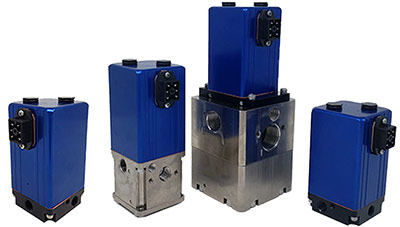Four new products are joining the Proportion-Air hazardous location series of regulators. These new Factory Mutual-approved devices meet the precision pneumatic pressure control needs of professionals working in environments where flammable gases, combustible dust or fibers/flyings and filings may be present.
 Two new intrinsically safe products offer higher accuracy and flow rates for hazardous locations.
Two new intrinsically safe products offer higher accuracy and flow rates for hazardous locations.
The ISQB3 controls pressures up to 150 psi and flows to 30 scfm. This unit is a space-saving single package, replacing the need for using a regulator-volume booster assembly.
The ISQB4 offers the same benefits as the new ISQB3 with even more flow – up to 200 scfm can pass through the unit.
These devices feature a unique booster design with no stamped gaskets, special molded diaphragms or seal parts. All of the parts related to normal maintenance are standard O-rings. Accuracy of up to 0.5% of full scale is typical; tighter accuracy is possible.
The two other new products are updates of current offerings. The ISQBX is a revised version of the current ISQB1, which has seen success in a variety of applications, including spray painting, jet fuel pressure testing and energy. An intrinsically safe device, this unit meets standards for National Electric Code Classes I, II and III, Division 1, Groups C, D, E, F, and G environments. The new ISQBX has ports built into the manifold instead of external fittings.
The ISQBF is a revision to the current ISF product. This nonincendive unit is for NEC Classes I and II, Division 2, Groups C, D, E, F and G with an intrinsically safe process connection for Class I, II, III Division 1, Groups C, D, E, F, and G hazardous (classified) locations with an ambient temperature rating of -25° to 40°C. Natural gas regulation is one of the top applications for this product. Similar to the ISQBX, it now uses internal manifold ports.
All of the units are compatible with most non-reactive gases, and brass manifolds are available for oxygen service. Additionally, these units are not constant bleed devices, meaning they don’t consume air or gas while controlling pressure in a steady state.
Proportion-Air Inc.
ProportionAir.com
Filed Under: Pneumatic Tips